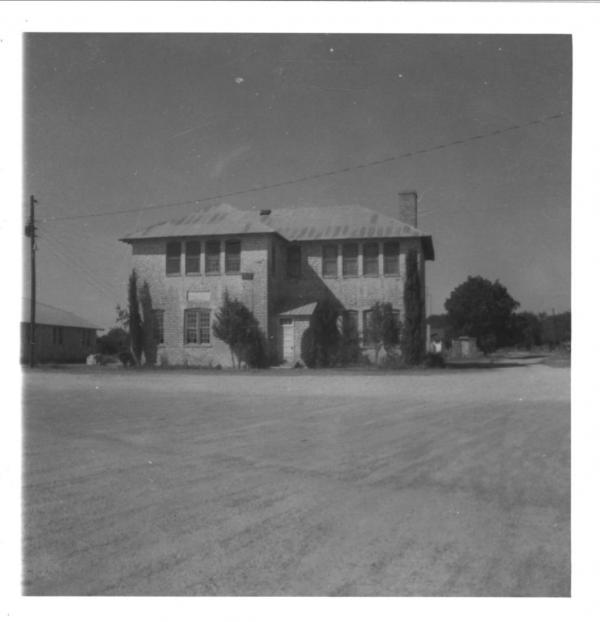Dripping Life
Following the Civil War, school in Dripping Springs, a small village in Texas Hill Country, 25 miles west of the state capitol in Austin, was conducted by soldiers who had fought for the Union. School was held only three or four months of the year, and while there were only a few settlers in the region, there was much displeasure about the school’s abbreviated schedule.
Three men -- all natives of the area -- were definitely not happy with only three months of school for the children in Dripping Springs and grew passionate about changing the situation. Their solution? Form a new school.
The three men -- Dr. J. M. Pound, a physician; W.T. Chapman, a merchant; and A. L. Davis, a farmer, became instrumental in building a school and decided to name it “The Dripping Springs Academy.”
W.T. Chapman donated the site for the school, but money was scarce after the war. Many families had moved to the area from the south, where they had lost everything, and had come to Texas for a new beginning. Most of the settlers owed Dr. Pound for his services, so he agreed for them to work off their debt by helping build the new school building, future home of the good school the three men envisioned.
In 1880, William A. Jordan, a noted teacher and Baptist preacher from Howard College in Marion, Alabama, visited his Uncle Jesse McLendon in Dripping Springs. Assisted by his Uncle Jesse, he joined the other three men in building “the Dripping Springs Baptist Academy.”
Rev. Jordon also planned to build a boarding house in the village, as well.
As if the school had been Mother Nature’s idea all along, almost all of the materials to build the school were found in nature and were near at hand. Village farmers quarried stones for the building and transported them to the building site. They constructed a lime kiln and burned the lime for mortar. The otherer were easily accessible.
The cash to purchase the necessary timber could not be raised, so the citizens with good credit pledged their credit for the amount needed. Timber and other necessary tools were hauled to Dripping Springs from Austin.
When all the materials had been gathered, men from the village went to work, even though none of them had worked as stone masons or had the skills to do so. Most of their exposure to this type of construction had been in building rock fences around their farms on the surrounding mountains. Once an experienced stone mason had been found to supervise their work, the farmers began constructing the school.
As the building began to take place, citizen from throughout the village would stay up through the night, keeping the wood on the stone to burn them into the lime.
By 1881, the first section of the school -- only one story in height -- had been completed and was ready for occupancy when school started in September. That same year, the building’s cornerstone was laid.
That first year, Professor Jordan served as principal as well as teacher. He was assisted by Miss Lizzie Morrell. That year, two boarding houses were built, and when school opened in September 1881, every bed in both boarding houses was filled with students whose homes were too far from the school to make the daily commute. According to reports, every spare room in houses in the village and in adjacent farms were also occupied by students attending the Academy. That first year, the school was considered a private school.
The school’s second year found it necessary to add another faculty member, and Mr. T.T. Martin was hired. By that time, the enrollment had reached 200.
The Academy was supported by the Pedernales Baptist Foundation (which was founded in 1873 by a group of Baptist churches, who sent messengers to Dripping Springs.)
The stone building was given to the Pedernales Baptist Foundation in 1883, and at that time, was run as denominational school. The summer of this year, Rev. Jordan moved to Kyle where he assumed the office of President at the Kyle Seminary.
The decline and eventual fall of Dripping Springs’ Baptist Academy could have been blamed on the lack of outside support. Additionally, there was discontent between the Baptists and Methodists in the community over the Academy. Shortly after the Baptist Academy was established, the Methodists moved out and a small school was established on the Phillips’ place by a man named Rowe. After several other
After several other congregational conflicts, the village of Dripping Springs was ready to establish a public school district. The year was 1889.
As more families settled in Dripping Springs, more students enrolled in the local school and more room was needed for the district. In 1920, the building was enlarged, a second floor was added and, like many years before, the men of the community participated in the construction, this time as paid laborers.
According to the historians of that time, the tasks, obstacles and obstacles were still encountered, but they were not as great as those faced by the men volunteering to build the first school in the region… and while money was still in short supply, it was much more plentiful than in the years after the Civil War.
Transportation for the necessary materials for the construction in 1920 was also much improved, and the materials and tools used on the project were more refined and easier to work with.
Using native stone that matched the original, one-story school, the addition and the school, itself, remained part of the Dripping School system until the new school was completed in 1949. Until 1952, when the building became property of Rambo Lodge #426, A.F. & A.M., the building had remained vacant.
In 1967, the building became a Recorded Texas Historical Landmark.



